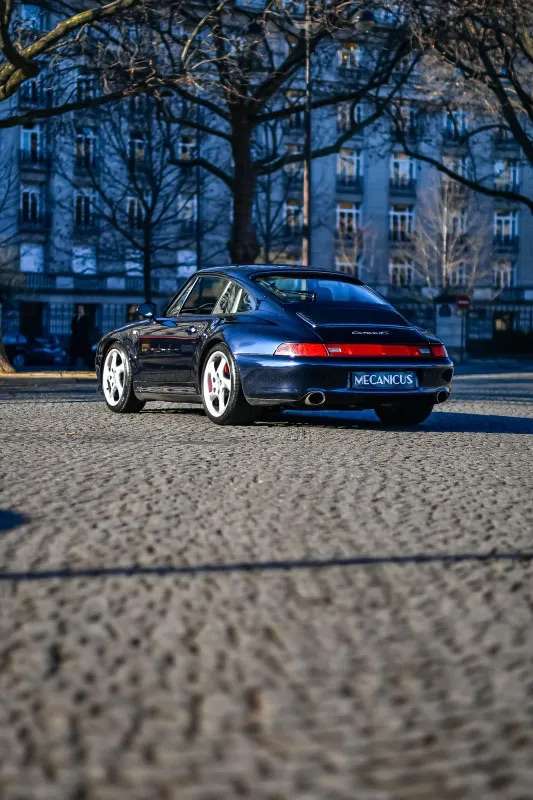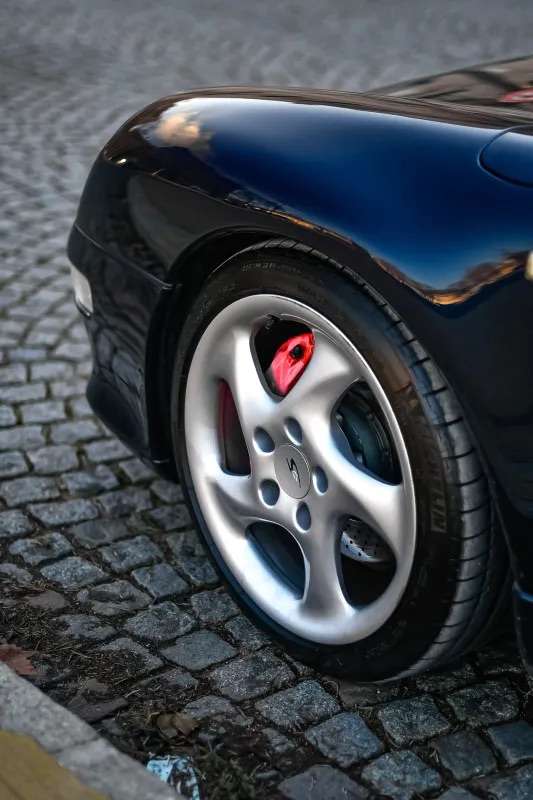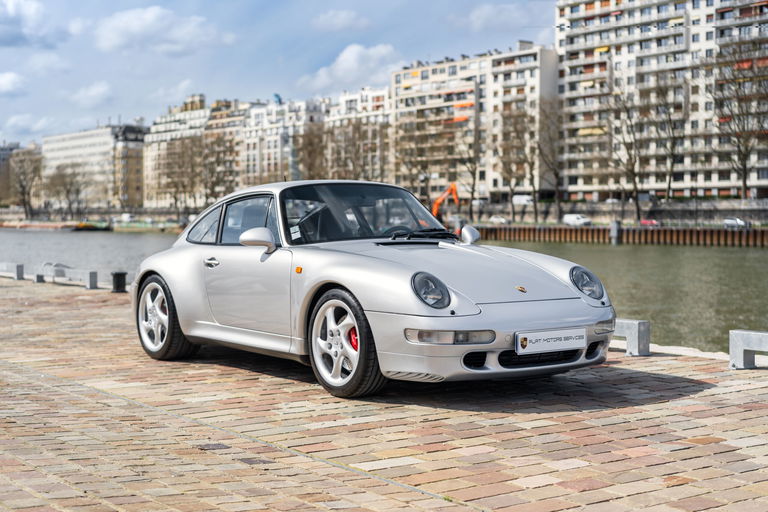History of the Porsche 993 Carrera 4S
Would it be essential to recall the history of the 911 myth? In a few words, the 911 has been the cornerstone, the spearhead, the figurehead of the Stuttgart-based manufacturer for almost half a century. With its signature architecture, the „901“ – which will become the 911 – will carry with it a monstrous wave of aficionados, taking over the years a major place in the history of the automobile. More than just a car, the 993 will become the symbol of a philosophy, a lifestyle, a state of mind. From California to Japan, through Europe, the 911 is still a worldwide success. If Ferrari has become inseparable from the color red, Porsche is and will always be linked to the 911. While the generations continue to follow one another and evolve, the older versions share a strong reputation, each with their own „tricks“. The 911 type 993, fourth of the name, is one of the most popular today. Why? Considered by many enthusiasts as the best 911, it has even captured the attention of the most reluctant. Produced from 1994 to 1998, the 993 will remain the last air-cooled Porsche. In other words? It will remain as the last true 911. Its engine, the 3.6 M64 flat-six, is undoubtedly one of the best engines ever produced. Of course, the „air-cooled“ ones pollute more and consume a bit more, but that’s not the point. The important thing is the sound, and it is certainly not you – dear readers, buyers and collectors – who will dare to contradict us. As far as design is concerned, it is certainly difficult to innovate and to really differentiate the 911s. The shape remains the same. It’s in the subtlety of the details that the difference is made. In this respect, the 993 made a big difference when it came out. Purer, simpler, finer, the 993 is for some the most beautiful 911. How can you not agree with them? Finally, the 993 is the perfect compromise between modernity and classicism, a modern 911, and yet already a classic. The 993 is a fantastic car, cool by definition, simple, with a killer elegance. In addition to a sound that will never be found again, the 993 is still affordable. It can also boast of being exquisite in its different variations. Targa, Cabriolet, Turbo and so on, to each his own 993.
Surprisingly, the success of the 993 was – at the time of its release – only mixed. Not everyone was in a hurry to get their hands on the Carrera. But history reminds us that a timid release does not mean failure. Far from it. When the 993 Turbo made its appearance, the machine took off. And because Porsche has a good memory for good recipes, the German manufacturer had the good taste to take up a concept that had seduced everyone before: combining the „small“ naturally-aspirated engine (the M64 Variocam with 284 hp) with the Turbo Look. Thus was born the Carrera 4S. But Porsche did even better. The Carrera 4S was to boast of inheriting the very noble chassis of the Turbo, while also taking over the running gear, the brakes and the „Wide Body“ bodywork of the latter. In short, the 4S was really just a Turbo without the Turbo and – what’s more – with less performance than the standard Carrera 4. To hell with that detail. That’s not the point. The Carrera 4S will outperform the Carrera and other Carrera 4s. It’s the one that stood out, and let’s face it, it’s the one we all want.
FR:
Couleur : Midnight Blue Metallic L39C
Intérieur : Classic Grey Leather
Transmission : Boîte Manuelle
Mileage : 148.000 km
Released on : 09/02/1996
Condition : Très bon état
Prix : 92.900 €
Équipement :
C00 Code Pays Allemagne
M139 Siège Chauffant Gauche
M340 Siège Chauffant Droit
M498 Sans désignation du modèle à l’arrière
M650 Toit ouvrant
Histoire de la Porsche 993 Carrera 4S
Serait-il essentiel de rappeler l’histoire du mythe 911 ? En quelques mots, la 911 reste depuis près d’un demi-siècle la pierre angulaire, le fer de lance, la figure de proue du constructeur de Stuttgart. Avec comme signature son architecture si particulière tant décriée, la “901” – qui deviendra 911 – va emporter avec elle une vague monstrueuse d’aficionados, s’octroyant au fil des années une place majeure dans l’histoire de l’automobile. Plus qu’une simple auto, la 993 va devenir le symbole d’une philosophie, d’un lifestyle, d’un état d’esprit. De la Californie au Japon, en passant par l’Europe, la 911 est encore aujourd’hui un succès mondial. Si Ferrari est devenue indissociable de la couleur rouge, Porsche est et sera à jamais lié à la 911. Pendant que les générations continuent de se succéder et d’évoluer, les anciennes versions se partagent une notoriété importante, chacune ayant leurs “trucs” bien à elles. La 911 type 993, quatrième du nom, est l’une des plus prisées aujourd’hui. Pourquoi ? Considérée par de très nombreux amateurs de la marque comme certainement la meilleure 911, elle a même su capter l’attention des plus réticents. Produite de 1994 à 1998, la 993 restera la dernière Porsche à refroidissement à air. En d’autres termes ? Elle restera comme la dernière vraie 911. Son moteur, le flat-six de 3.6 M64 est incontestablement l’un des meilleurs moteurs jamais produits. Alors certes, les “refroidissements par air” polluent davantage et consomment un peu plus, mais l’important n’est pas là. L’important réside dans la sonorité, et ce n’est certainement pas vous – chers lecteurs, acheteurs et collectionneurs – qui oserez nous contredire. Côté design, il est certes compliqué d’innover et de différencier véritablement les 911. La forme reste la même. C’est dans la subtilité des détails que la différence se fait. À ce jeu-là, la 993 trancha à sa sortie avec les versions précédentes. Plus pure, plus simple, plus fine, la 993 est pour certains la plus belle des 911. Comment ne pas leur donner raison ? Finalement, la 993 reste le compromis parfait entre modernité et classicisme, une 911 moderne, et pourtant déjà un classique. La 993 est une auto fantastique, cool par définition, simple, à l’élégance meurtrière. En plus d’une sonorité que l’on ne retrouvera plus, la 993 est encore abordable. Elle peut en plus se targuer d’être exquise dans ses différentes déclinaisons. Targa, Cabriolet, Turbo et j’en passe, à chacun sa 993.
Chose étonnante, le succès de 993 n’était – à sa sortie – que mitigé. Les amateurs ne se sont pas tous pressés pour s’arracher les Carrera. Mais l’histoire nous rappelle qu’une sortie timide n’est pas synonyme d’échec. Loin de là. Lorsque la 993 Turbo fait apparition, la machine se lance. Et de même, Porsche ayant une très bonne mémoire des bonnes recettes, le constructeur allemand va avoir le bon goût de reprendre un concept qui avait tous séduit auparavant : associer la „petite“ motorisation atmosphérique (le M64 Variocam de 284ch) avec le Turbo Look. Ainsi naquit la Carrera 4S. Mais Porsche fit encore mieux. La Carrera 4S allait se targuer d’hériter du très noble châssis de la Turbo, en reprenant également les trains roulants, les freins et la carrosserie „Wide Body“ de cette dernière. En bref, la 4S n’était en réalité qu’une Turbo sans Turbo avec – qui plus est – des performances en deçà de la Carrera 4 standard. Au diable ce détail. L’important n’était pas là. La Carrera 4S surpassera les Carrera et autres Carrera 4. C’est elle qui se démarqua, et soyons francs, c’est elle que nous voulons tous.
Notre exemplaire
Notre exemplaire est un des 6948 Carrera 4S produits entre 1996 et 1998. Ce châssis WP0ZZZ99ZTS310695 fut livré neuf au concessionnaire Porsche Zentrum Hanovre le 09 Février 1996 – code pays C00. Terminé en Midnight Blue (code L39C) avec un intérieur Gris foncé (code TF) parfaitement adapté.
Notre auto n’a connu qu’un propriétaire en Allemagne avant qu’elle ne soit importée en France en 2002. De là, elle est toujours restée en région parisienne, passant entre les mains de cinq propriétaires français. Elle totalise aujourd’hui un peu moins de 148.000 km. Cet exemplaire a reçu une peinture complète, un spoiler avant de Turbo ainsi que le logo Carrera 4S à l’arrière. Il se présente aujourd’hui dans un très bel état de présentation et de préservation, disposant encore de tous ses stickers, couleur et option. Nous disposons de toute la documentation d’origine, de son carnet d’entretien ainsi qu’un important dossier de facture depuis son arrivée en France.














































